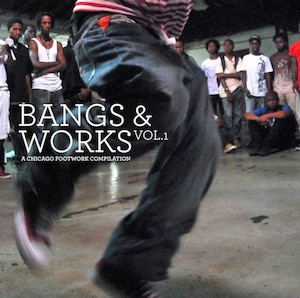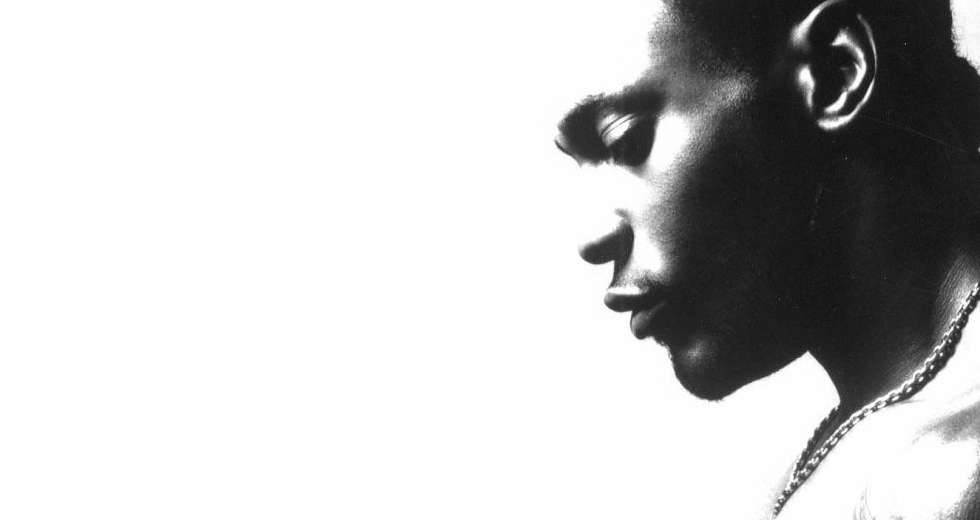Flashdance: Footwork And the Future
Laurent Fintoni assesses the impact of footwork on the ever-changing face of electronic music

Among the various developments in UK club music over the last few years, one of the more surprising and fascinating has been the explosion of interest surrounding Chicago’s juke and footwork, and how they have in turn impacted existing club forms. Descended from house music, juke and footwork have common elements in their tempo range (160bpm) and repetitive use of samples leading many to use the terms interchangeably when, especially to those in Chicago, they’re not. While juke is closely aligned to ghetto house, and also refers to a style of ghetto house dancing, footwork stemmed from juke but introduced additional, frantic syncopation and an approach to sampling more closely aligned with hip hop. Confusing things further, footwork also refers to a style of dancing found primarily in technically-driven battles with footwork, the music, often made specifically for use in these battles – hence its stripped down, rawer and less commercial approach compared to juke (see this interview with Nate Boylan). If you were anywhere near a dancefloor in 2011, chances are the rhythms and sample science of juke and footwork graced your ears whether in their original form or, increasingly, in new and intriguing mutations. And while juke has been popular in parts of mainland Europe for a few years now, the explosion of interest in footwork outside of Chicago and the influence it has exerted on club forms old and new has been undeniable, and its continuing ramifications fascinating.
Juke paved the way for footwork in a sense, first creeping into the UK’s dance music consciousness in 2009 with Addison Groove’s “Footcrab” introducing its rhythmic sensibilities and sample aesthetic to dubstep audiences. It was an instant hit with UK crowds and made the juke sound increasingly palatable to both audiences and producers. With minds and bodies primed to Chicago’s faster dance styles, Mike Paradinas started championing footwork via his Planet Mu label. Throughout 2010, Mu released records by hitherto unknown Chicago artists such as DJ Nate, DJ Rashad and DJ Roc to an increasingly curious audience that included not only fans but also producers. These releases served as an appetiser for the main course, a compilation in December of that year called Bangs & Works Vol. 1. Planet Mu’s work was key to fully establishing the sound into the UK public consciousness and would prove central to reinvigorating club forms new and old.

Meanwhile, Flying Lotus started covering DJ Roc’s “One Blood” with his live band and Mark Pritchard – who had been exchanging footwork tracks with Mike Paradinas – weighed in with his remix for Poirier’s “Get Crazy” and Africa Hitech’s (his project with Steve Spacek) anthemic “Out In The Streets”, which flipped the eponymous vocal sample over a footwork rhythm that was already showing signs of mutation. The Night Slugs label dropped Girl Unit’s “IRL”, which took its lead from “Footcrab” by borrowing key aesthetic elements from the Chicago sounds and placing them on a slower tempo combined with brighter, shinier and more club friendly sounds.
Old to the New: Footwork Jungle and Ecstasy Boom
The most interesting effects of this increased attention to footwork and juke started being felt in early 2011, as Chicago’s influence reached beyond current club forms into the past. By January, clear links were appearing between the latest evolution of Chicago’s ‘tracks’ – as the locals refer to them –and older UK club sounds, most notably jungle and rave, on both sides of the Atlantic. In New York, DQ – founder of Dub War – admitted to footwork rekindling his love and interest in jungle, Kode9 and Ikonika went back to back jungle for juke at Hyperdub’s takeover of Berghain and two producers in London and NYC had a moment of synchronicity and came up with the same idea: use juke and footwork’s frenetic rhythms and sample chops to reinvigorate classics from the rave and jungle era. The similarities between these disparate genres may not have been obvious on the surface, yet they shared a couple of vital DNA strands, namely a common tempo range at 160bpm and, in the case of jungle and footwork specifically, a predilection for more furious rhythms and syncopation. In the age of digiculture, that’s all a producer or DJ needs to get moving.

In London, Jim Coles – known as Om Unit – followed early experiments with footwork-minded rhythms by setting up the Philip D Kick alias to anonymously release footwork edits of classic jungle tracks, known as the Footwork Jungle EPs. Coles had first heard of juke following an Ikonika set in late ‘09 and became further intrigued by footwork thanks to Planet Mu’s output. While he’d previously made a name for himself in hip hop and battle DJ circles, he was originally a jungle kid. In that sense, the PDK alias was an unconscious return to his roots sparked by noticing the shared DNA of footwork and jungle and the excitement the combination of both could create in DJ sets. This led him to take the idea to its next logical step. In New York, Travis Stewart – known as Machinedrum – was applying a similar logic to classic jungle and early drum’n’bass for his Ecstasy Boom EP. Stewart originally started his career by experimenting with what he describes as ‘chopped up jungle’ and had been making footwork inspired productions for a while, though he had no obvious outlets for it until the sound rose to wider popularity thanks to Planet Mu.

The pair quickly realised their common ideas via Twitter, and soon enough the likes of Kode9, Mark Pritchard, Chrissy Murderbot and Mike Paradinas were playing the edits to audiences worldwide. A sweet spot between the old and the new had been found, and people wanted more of it. Considering their own musical origins, for the duo to end up using jungle to create something new and exciting nearly 20 years later made sense in a full circle kind of way. By mid-2011 a clear picture was starting to emerge: microgenres unheard of outside of Chicago for more than a decade were reviving interest and possibilities in UK club forms old and new. More so than juke, footwork increased its influence over producers outside of Chicago throughout 2011, both in the UK and elsewhere: the latest in a long line of cross-Atlantic pollination that have informed popular underground club forms for the last 20 years. And with the internet thrown into the mix, a process that once took up to five or six years had taken barely two.
Eight months on from the first edits, Om Unit was wrapping up the PDK experiment – leaving behind three EPs, a one-off Drexciya edit and three official remixes – and his work under his own name was increasingly incorporating lessons learnt from it, specifically in its tempo location and use of more frenzied rhythms kept subtle by the use of half time/double time switches (see “Vibrations” from the Transport EP). Machinedrum meanwhile had delivered an album for Planet Mu in the summer, Room(s), that took inspiration from rave and jungle and borrowed from footwork’s rhythmic energy to deliver a cleaner, more palatable, yet still challenging sound that proved a hit with audiences.
Synthesis vs Mixture and the Dream Continuum
Coles and Stewart first met in the summer of 2011 and an impromptu visit to London from the now Berlin-based Machinedrum a few months later led them to join forces. With no set ideas, the potentials hinted at by their earlier experiments proved hard to resist. Delving further into the past, they unearthed three tracks from jungle’s past and set to revive them, achieving together a greater degree of finesse in the finished versions, which went on to form the Reworkz EP. With Planet Mu having been such a central force in pushing footwork to new ears and – willingly or not – fostering its increasing mutations, it felt only right that the EP be released on the label in early 2012 under the name Dream Continuum.
In the January 2011 issue of The Wire, talking about the Night Slugs and Numbers labels Lisa Blanning stated that “both [labels] have been feted for pushing a real ‘wot do you call it’ sound… But part of the reason this sound doesn’t have a name is because it doesn’t have any defining characteristics. It’s a mixture, instead of a synthesis, of so many existing club forms.” This trend is something that’s continued apace both in the clubs and on paper as ‘bass music’ solidifies as the default umbrella term for the blurring of boundaries between house, techno and dubstep. The work of Om Unit and Machinedrum, however, has felt more like a synthesis, creating something genuinely new out of existing forms. The primary defining characteristic of this synthesis and of the continuing footwork mutations we’re hearing is found in the specific meshing together of footwork and jungle’s frenetic rhythm qualities: the syncopation, the chopped breaks, the strange use of triplets and the use of claps or snares to keep count. All of these aren’t new per se, however their current combination and the genuine excitement that results from it – in both fans and other producers – constitutes something potentially new at this point in time. Another defining characteristic would be a simplistic approach to the overall production, a lack of obvious intricacy that lets the rhythm and increasingly the melodies – something the original Chicago sounds often lack – drive things forward. This last point is echoed by Machinedrum’s remarking in an interview that “Room(s)” was an experiment in letting go of the songs before I beat them to death with ideas, mixing sessions, reworking, etc.” Om Unit, for his part, created the PDK edits in surprisingly record time, almost as if the music was writing itself. Dream Continuum builds on the pair’s initial desires to keep things simple and fun, further refining the key characteristics of their synthesis into a new sound that seems to be instantly appealing to current dancefloor audiences. A case of ‘do it now, we can name it later’, perhaps.
Let Me Hear Your Footwork
As the work of Coles and Stewart caught attention, it started to replicate the effect of Paradinas’s own work with a growing body of producers around the world inspired by footwork’s infectious qualities. Experimentation with established club forms old and new continued unabated throughout 2011, leading us towards all sorts of fascinating mutations that constitute some of the most exciting dance music right now. Dutch producer Krampfhaft spliced bits of footwork’s rhythmic DNA with gabber and Euro rave leads to produce some of the most euphoric footwork inspired music of 2011 on tracks like “Spit Thunder”, “I Needed You” and “Carl Sagan The Man”. Mark Pritchard made his own point about footwork and jungle’s perfect match by turning the VIP of “Out In the Streets” into a jungle track. Kuedo delivered his debut album Severant for Planet Mu by borrowing from footwork’s viral rhythms as well as trap’s hi hat rushes and Vangelis’s sweeping, epic synths.
Each producer is synthesising this rhythmic potential in his own way, adding their own flavours of choice to the mix with no genres seemingly safe from being dissected and experimented upon.
Perhaps most fascinating has been footwork’s reach into drum’n’bass, a genre that has arguably been stagnant for years now and is finally finding new potentials for progression. It was first hinted at with Eprom’s “Twerkul8”, which revived the tired techstep formula, and was followed in early 2012 by Fracture’s “The Limit VIP”, which refined the idea while keeping the tempo closer to dnb’s current 170bpm. Fracture admitted to being inspired by the PDK experiment for his VIP, an inspiration that seems to have also impacted Detroit’s Sinistarr who has followed Fracture’s lead by meshing footwork and dnb on his refix of Capleton’s “Slew Dem” and his forthcoming “Western Ting”. Footwork’s wild rhythms sped up to dnb speed make for mentally arresting yet bodily stimulating moments in the dance.
The defining characteristic of the synthesis, its rhythmic qualities, seeps through all this music. Each producer is synthesising this rhythmic potential in his own way, adding their own flavours of choice to the mix with no genres seemingly safe from being dissected and experimented upon.
I Don’t Care What You Call It, Enjoy It Now, We Can Name It Later
While the majority of attention and noise in 2011 centred around the various house music revivals that have fed into the bass music bubble, footwork’s mutations have steadily provided exciting and invigorating dance music by synthesising old and new. While most of what gets lumped into the bass music bin strikes me as being in search of the next big thing, a growingly homogenised ‘wot do u call it’ moment that’s lasted for a couple years now, the best footwork mutations seem much less preoccupied with what they are and more interested with what they do, especially on the dancefloor – the same impetus that drives the more interesting strands of bass music. To go back to the mixture vs synthesis idea, I’m reminded of something Kode9 said once about how mixing two tracks together can sometimes create a third, ‘new’ track. That idea neatly summarises why footwork’s mutations are so exciting and vital right now. A blend of two tracks can be just that: a nice mixture of two things. And then sometimes a blend is so much more, yet as a DJ you know that at some point you’ll have to let go of it. The synthesis achieved by the footwork jungle experiments and footwork’s on-going mutations is that third track, unshackled by temporal fears.
With over 20 years of dance music evolution behind us now, would it be so strange for the next big evolutionary jump to come from a synthesis of past forms? One so far unheard of that sidesteps pastiche and mixture, instead delving into dance music’s increasingly complex DNA to fashion something genuinely new, as exciting as the birth of jungle or dubstep. And maybe we don’t need a ‘wot do you call it’ moment anymore to create the necessary shift forward. The dissolving of boundaries in the bass music umbrella, with its mixture of established forms, and the growing interest in genreless club nights and DJ/live sets that embrace the slow/fast idea further hints at this. It’s maybe less a case of ‘wot do you call it’ and more a case of naming it later and enjoying ourselves for now. After all, that doesn’t make it any less new, and at least it places the focus where it matters most: on the dancefloor.
Additional recommended listens
- Patrice & Friends Champagne Saunas: Juke meets 80s r&b and coke funk for a party.
- Sully Carrier: The stripped-down Chicago approach to footwork gets a distinct London twist.
- Munchi Rotterdam Juke EP: Further experimentation with footwork’s rhythm and Holland’s in-your-face dance music traditions.
- Pixelord “Ninja Clown (Deft remix)”: A potent dancefloor statement by a young Croydon producer looking at Chicago to reinvigorate Russian beats.
- Ital Tek “Gonga”: Yet another Planet Mu artist who’s found his groove in footwork’s tempo range and rhythmic qualities.
- Shlohmo “wen uu (Salva Remix)”: A stripped back take on footwork’s rhythmic potential that still swings.
- EAN “Aulderkincher”: The man once responsible for Various Production finds a groove at 160 and blends footwork with d'n'b aesthetics to devastating effect.

